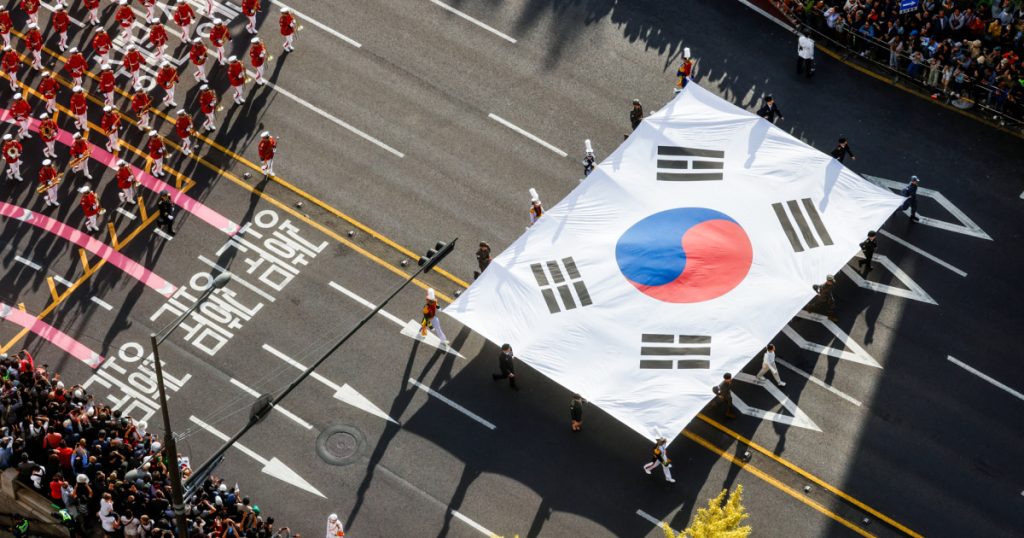South Korea recently showcased a ballistic missile capable of carrying an eight-ton warhead and featured a flypast of a U.S. bomber at military parades in Seoul as a show of force to signal readiness to respond to North Korean threats. These military parades, traditionally held infrequently, have been revived by President Yoon Suk Yeol to demonstrate South Korea’s military might as a deterrence to North Korea’s frequent weapon displays, such as intercontinental ballistic missiles. The parade involved some 5,300 troops, 340 types of military equipment, and aircraft flypasts, including the Hyunmoo-5 missile successfully tested last year.
In his speech ahead of the parade, President Yoon warned Pyongyang against using nuclear weapons and criticized what he called its illegal military cooperation with Russia. Yoon celebrated the launch of the Strategic Command, tasked with responding to North Korea’s weapons of mass destruction, emphasizing that any attempt by North Korea to use nuclear weapons would result in a resolute, overwhelming response from South Korea and its U.S. alliance. The Hyunmoo-5 missile was a centerpiece of the parade, designed to penetrate underground bunkers and capable of carrying a one-ton warhead with a range exceeding 3,100 miles.
The South Korean parade included a flypast by a U.S. B-1B strategic bomber for the first time, as well as the participation of the U.S. Eighth Army band and an armored Stryker brigade. The Hyunmoo-5 missile, dubbed a “monster missile” by South Korean media, was showcased as part of the country’s “three-axis” defense system aimed at neutralizing North Korea’s nuclear provocations, including war plans that involve pre-emptive strikes if necessary. Military officials highlighted the importance of the parade in improving troop morale, stimulating defense exports, and serving as a deterrence against North Korea’s military threats.
Hours before the parade, North Korea’s vice defense minister criticized the B-1B’s planned flypast and accused Washington of conducting a “reckless military bluff” with recent actions, such as sending a nuclear-powered submarine to South Korea. Kim Kang Il pledged retaliatory measures to continue improving North Korea’s “powerful war deterrent.” Some opposition lawmakers and activists in Seoul criticized Tuesday’s parade, comparing it to past military governments and questioning its value as a use of taxpayers’ money. The parade had an allotted budget of 7.9 billion won ($6 million) this year.
Overall, the military parade in Seoul served as a demonstration of South Korea’s military strength and readiness to respond to potential threats from North Korea. President Yoon emphasized the importance of deterring North Korea from using nuclear weapons and showcased the Hyunmoo-5 missile as a key component of the country’s defense system. The involvement of U.S. military assets in the parade highlighted the strong alliance between South Korea and the United States in deterring aggression from North Korea. While the parade faced some criticism for its cost and historical associations, it was defended by defense ministry officials as a means to boost troop morale and enhance national defense capabilities.


